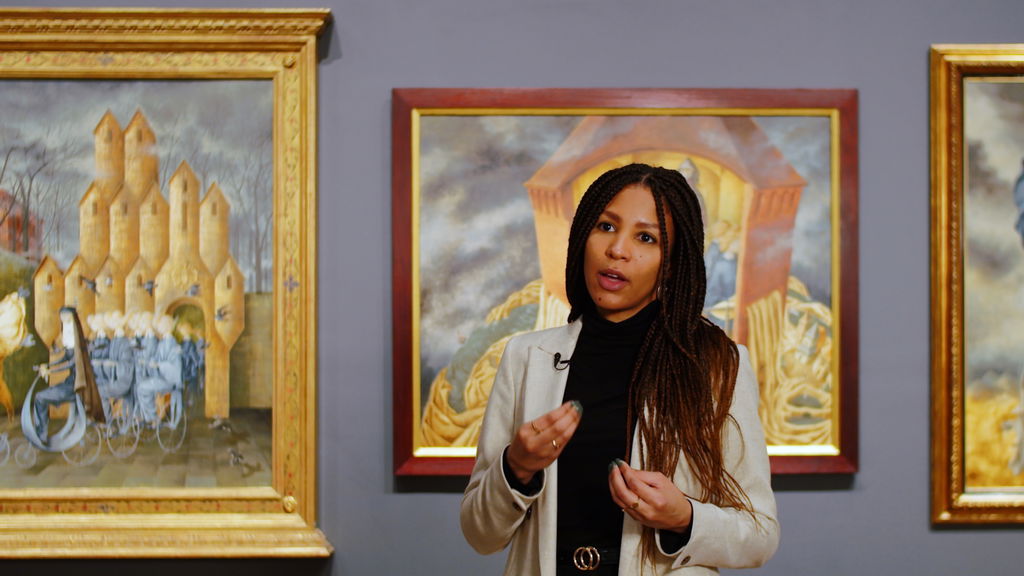Home
Talks
Asafo Flags: Stitches Through Time
Asafo Flags: Stitches Through Time
Gus Casely-Hayford traces the history of Asafo Flags, unique textiles from Ghana. He draws upon his own personal and historical perspectives to help us understand the lasting relevance of these cultural artefacts.
Featuring national symbols alongside local motifs, Asafo Flags conjure a vibrant past. Whilst flagging familial identity, they also served to signal existing military allegiances with arriving European forces in the 16th century. In 'a glorious defiance against time,' these flags provide 'a visual metaphor for what community could mean.'
Time Period:
16th century
Themes:
British historian Gus Casely-Hayford writes, lectures and broadcasts widely on African culture. He is a research associate at the School of Oriental and African Studies (SOAS) at the University of London and a member of its Centre of African Studies Council. He also sits on the Board of the Caine Prize for African literature.
Born in London, Casely-Hayford was educated at SOAS, where he received his doctorate in African history and was later awarded an honorary fellowship. As director of 'Africa 05', he organized the largest African arts season in Britain with more than 150 venues hosting 1,000 events.
He has presented two series of The Lost Kingdoms of Africa for the BBC and wrote the companion book (2012). In 2017 Casely-Hayford wrote and presented a six-part television series for Sky Arts called Tate Britain: Great British Walks. He also advised on a Royal Shakespeare Company production of Hamlet, worked on a British Library exhibition about the African intellectual tradition and consulted on Tate Britain's 'Artist and Empire' exhibition. In the same year he delivered a Ted Global Talk on pre-colonial Africa.
Watch More
Watch More

7:23
'1A Physical Essay in Power': The Striking Story of an Ivory Mask from Benin
Gus Casely-Hayford reveals the secrets of a West African ivory mask created over 500 years ago, depicting a 'steely and ruthless' queen mother.

1:16
1 Minute 1 Work: The Sake-drinking Boy
Shantell Martin shares her admiration for Hishikawa Moronobu’s inspiring use of line.

8:17
Surrealism: Imagining A New World
Why did Surrealism appeal to artists across the world?

7:23
'1A Physical Essay in Power': The Striking Story of an Ivory Mask from Benin
Gus Casely-Hayford reveals the secrets of a West African ivory mask created over 500 years ago, depicting a 'steely and ruthless' queen mother.

1:16
1 Minute 1 Work: The Sake-drinking Boy
Shantell Martin shares her admiration for Hishikawa Moronobu’s inspiring use of line.

8:17
Surrealism: Imagining A New World
Why did Surrealism appeal to artists across the world?

7:56
The Modern Woman: Manet’s A Bar at the Folies-Bergère
Griselda Pollock unpacks some of the questions raised by Manet’s enigmatic last masterpiece.

13:58
Collages: A Discussion Between Brian Clarke and Hans Ulrich Obrist
World-renowned curator Hans Ulrich Obrist talks with British artist Brian Clarke.

10:00
Albert Irvin: ‘Colours of Feeling’
Discover the life force behind Albert Irvin’s vibrant paintings.